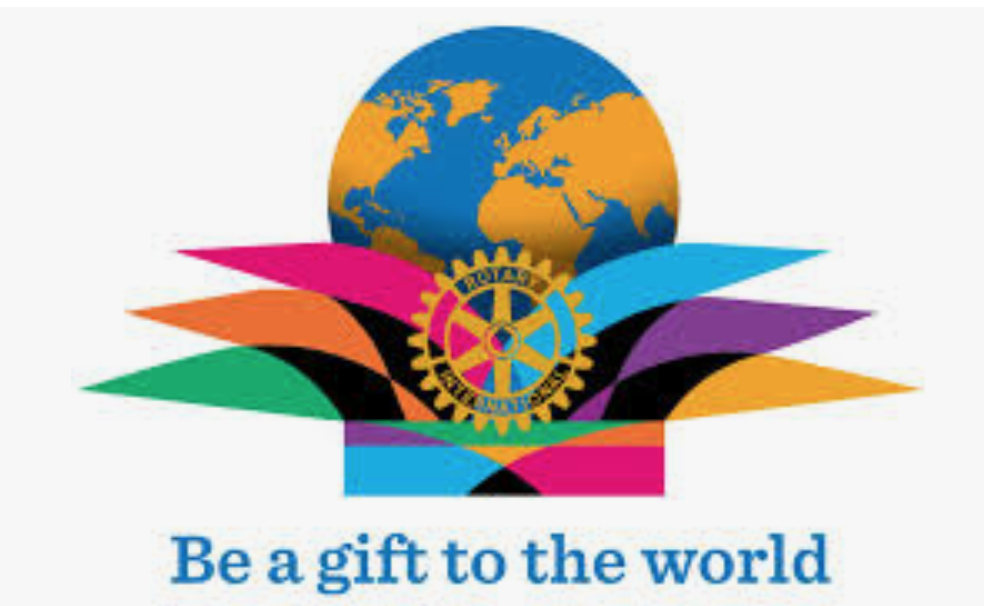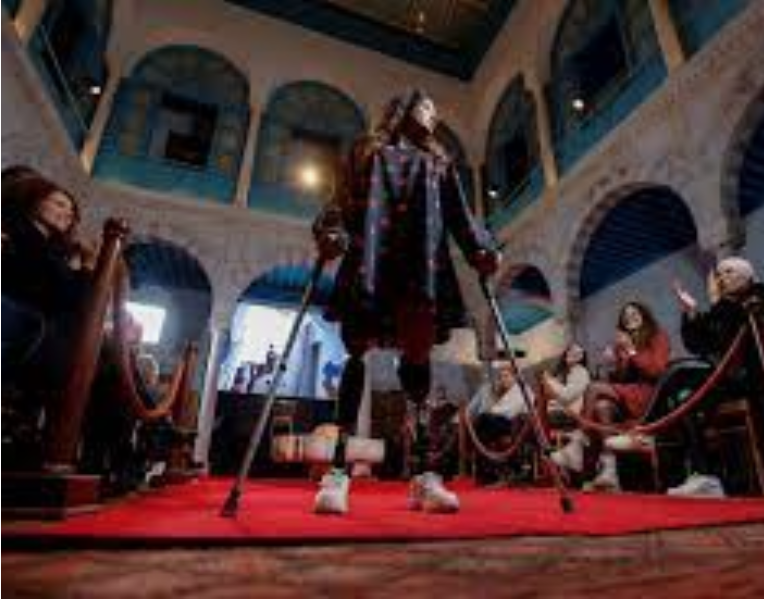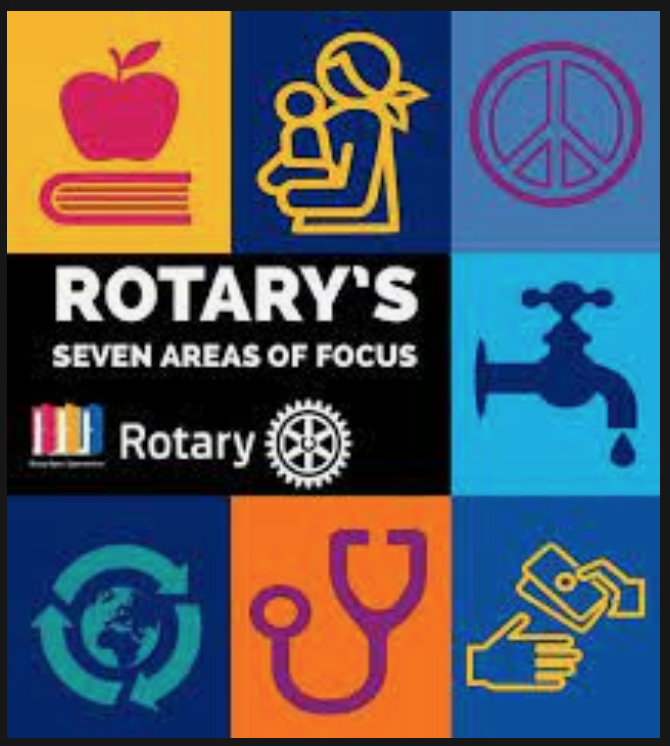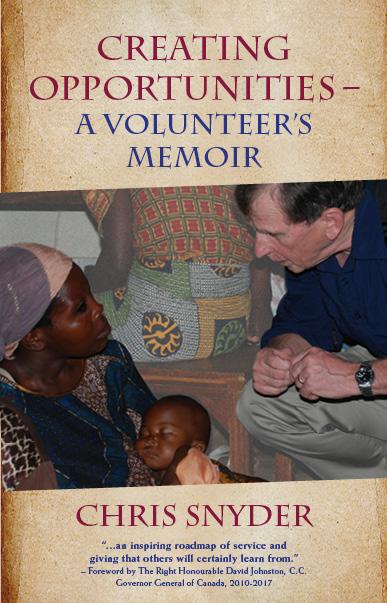Volunteering Through Rotary Brings Opportunities and Good News

There is More Good News in the World than Bad
In Mexico in July 2021, after severe rainstorms created major mudslides outside Guadalajara, a small group of volunteers rushed to get clothing, food, soap and other health supplies to those who had been forced out of their homes.

In Tunisia in November 2021, a group of volunteers created a body-positive fashion show in which a dozen young women and girls with amputations, medical conditions, burns and other disabilities traversed the RED CARPET in custom-made garments.
Crossing the red carpet made the participants feel “normal” and beautiful and for some it was A DREAM COME TRUE.
In Cambodia in 2021, young people from Cambodia, Japan and Taiwan worked together to build some new classrooms for a school in Siem Reap Province. In British Columbia after the discovery of children’s remains in Kamloops, a group of volunteers erected and filled a mini-library in their neighbourhood with books by and about Indigenous peoples. The books have been well-read.
Apart from volunteering, what do all these volunteers have in common? They were all ROTARIANS.
These stories are just a few of the 100s of thousands of voluntary acts by Rotarians that occur every day in countries all over the world.
Rotary has over 1.4 million members, in 35000 clubs in approximately 190 countries in the world. Rotary is arguably the largest volunteer organization in the world. Sadly, much of the world knows little of the impact of Rotary volunteering.
Full disclosure: I have been a proud member of the Rotary Club of Toronto for 37 years. While some volunteering activities are small, some can be all-consuming. They range from:
- making phone calls to other members to show concern about their health
- organizing community fundraising events,
- planting trees and creating local and national parks
- participating on boards and committees
- reading to blind people
- delivering food to older people
- running a speaking competition
- hosting an international student on a student exchange
They could be larger efforts such as building schools in the developing world or creating movements, such as H.I.P. (HONOURING INDIGENOUS PEOPLES).* H.I.P. is a movement and partnership between Rotarians and Indigenous Peoples.
A very rough estimate suggests there are more than 1000 volunteers across Canada working on HIP initiatives.
The biggest Rotary initiative is “Polio Plus.” Rotary started this with the goal of eradicating polio and have raised in excess of $1 billion, with thousands of their members participating in immunization drives.
The World Health Organization (W.H.O.) and the Gates Foundation may receive more publicity, but it is Rotary that is and has been the driving force from the start.
Polio infections have been reduced from over 350,000/year in 1988 to about 30/year today. As the saying goes, WE ARE SO CLOSE to eradicating polio.
Rotary’s 4-Way Test, developed in 1932 is: In All We Think and Do:

1) Is it the Truth?
2) Is it Fair for All Concerned?
3) Will it build Good Will and Better Friendships?
4) Will it be Beneficial for All Concerned?
Rotary has seven avenues of service, namely:
- disease prevention
- water and sanitation
- maternal and health care
- basic education and literacy
- community economic development
- environment
- peace building

Rotary has been nominated for at least One Nobel Peace Prize.
Some people argue Rotary is involved in too many things, but the diversity provides an opportunity for almost everyone to pursue a cause in which they are interested.
One big plus of Rotary is worldwide networking. Virtually every community of size has a Rotary Club. Most of the members are key players in their community. A Rotarian can drop into a meeting everywhere in the world and connect with key people.
I have done this many times in such faraway places as India, Tanzania, Cambodia, Malawi, South Africa, Burkina, Faso, The Dominican Republic, Mexico and Haiti.
During the Ukrainian war, our club was able to have joint meetings via Zoom with fellow members in the Ukraine and participate in local initiatives.
In Canada H.I.P. has become a national organization because we can connect and engage with like-minded people across the country.
In addition to making things happen, those involved will almost all tell you of the friends they have made, experiences they have and skills they have gained. These include public speaking, leadership, management, networking and values useful in all facets of life. Not the least of which are the benefits and help given to many.
As a result, forward thinking organizations understand the importance of having people in their company in Rotary.
Rotarians also play a major role outside of Rotary. In fact, Rotary was one of the founding members of the U.N.
During the pandemic, even though people could not meet individually, they could meet virtually, and some clubs actually increased their membership.
A survey of new members in our club all said they joined because THEY WANT TO DO SOMETHING MEANINGFUL and to GIVE BACK. Being a member of Rotary is one way to do it.
Rotary used to be viewed as “an old white man’s organization.” Not anymore. Today, as it continues to grow, 25% of our members are women – our incoming International President is a Woman – a Canadian, Jennifer Jones. Rotary is becoming increasingly diverse. Over 60% of our clubs’ new members in the past two years are first or second-generation Canadians from Non-European or North American countries.

Rotary also has a sub-group called Rotaract aimed at those under 30 who want to change the world.
What I have written about Rotary could also be applied to other service organizations such as Lions or Kiwanis.
If you are interested, go online, look at Rotary International https://www.rotary.org/en and Rotary in your community. Here is a link to the Rotary club of Toronto https://www.rotarytoronto.com/ or search out members in your community. You – and the world – will not be disappointed.
Do not worry about your age. There are many in their 80s who have joined.
If you are not interested in joining, supporting Rotary initiatives is always money well-invested
You could also encourage your children, grandchildren and other younger people.
Every Rotary club is looking for people who want to become engaged.** I have often said Rotary is a collection of people from every walk of life wanting to make the world a better place. Are you one of those people?
Till next time,
Chris Snyder
* HIP is a partnership between Rotarians and Indigenous Peoples. Our board is comprised of 50% Rotary, 50% Indigenous and 50% female membership. Our focus is education, awareness and building of relationships.
Chris is the founding and current chair of HIP. Much of Chris’ volunteering is through Rotary.
His book, “CREATING OPPORTUNITIES: A Volunteers Memoir” is available here: https://hilborn-civilsectorpress.com/products/creating-opportunities-a-volunteers-memoir
** A caveat: Being a Rotarian takes time and it costs to join. The amount varies from club to club. In return, you become part of a giving and positive energy group, creating opportunities for others.
You May Also Like

Getting Along and the Golden Rule
July 31, 2022
Saying Positive and Supportive Things to Others
August 13, 2023
